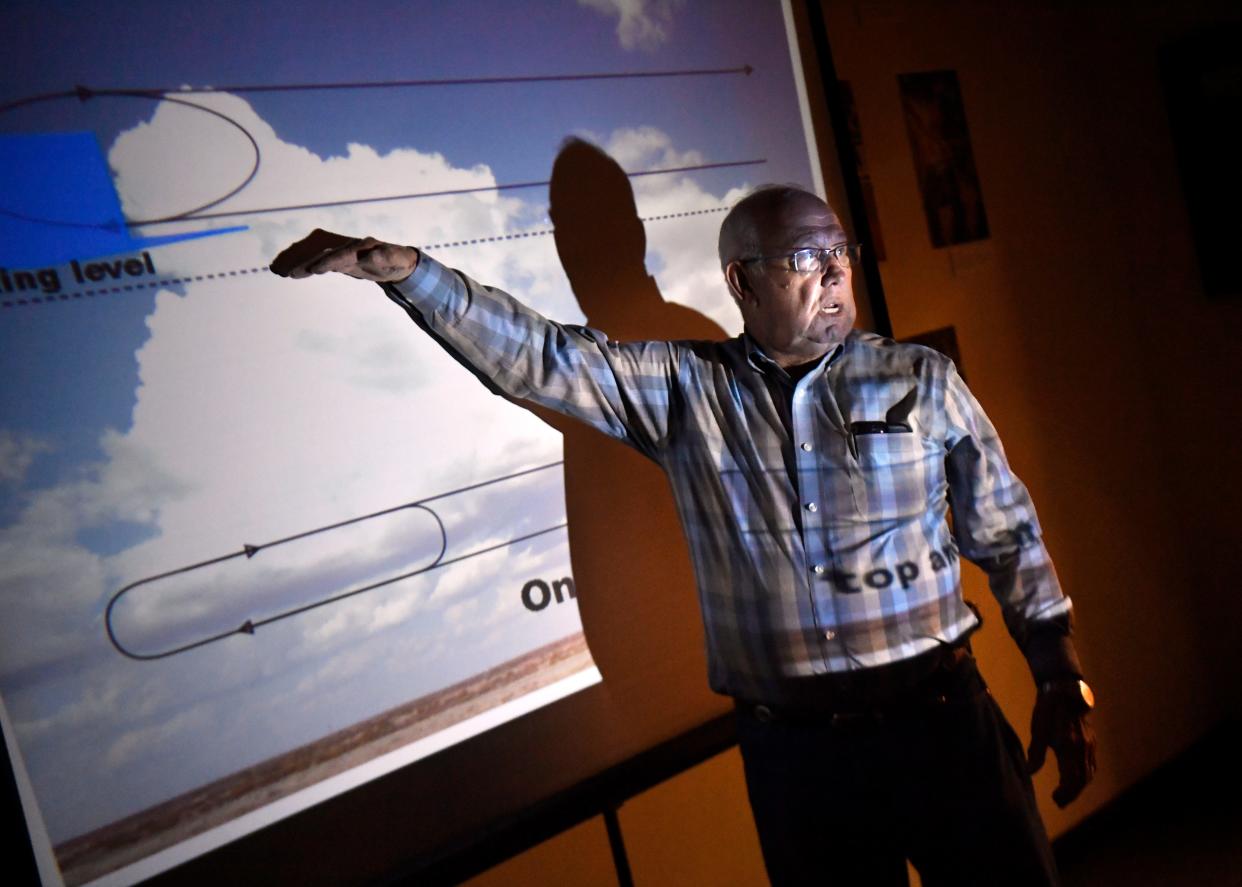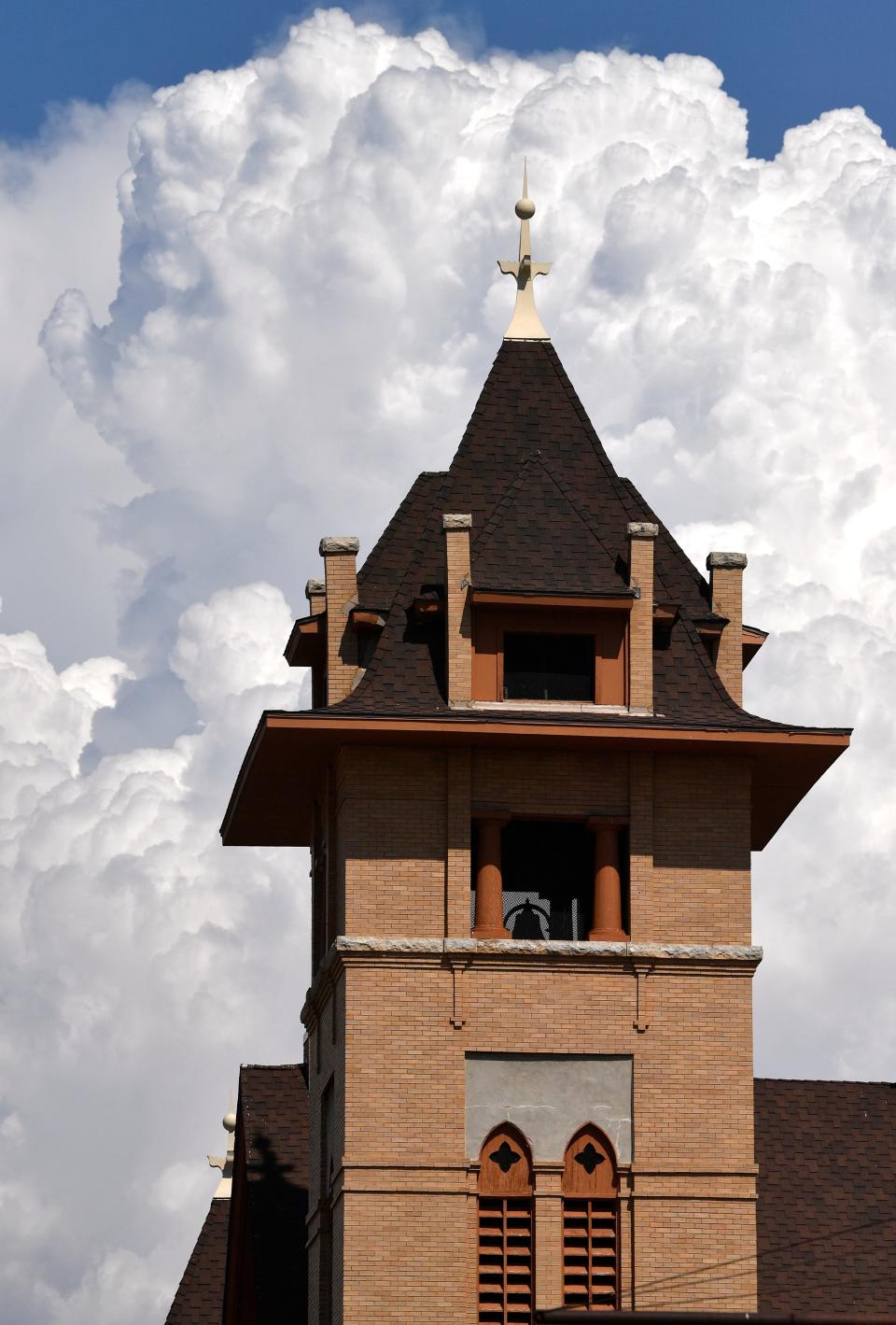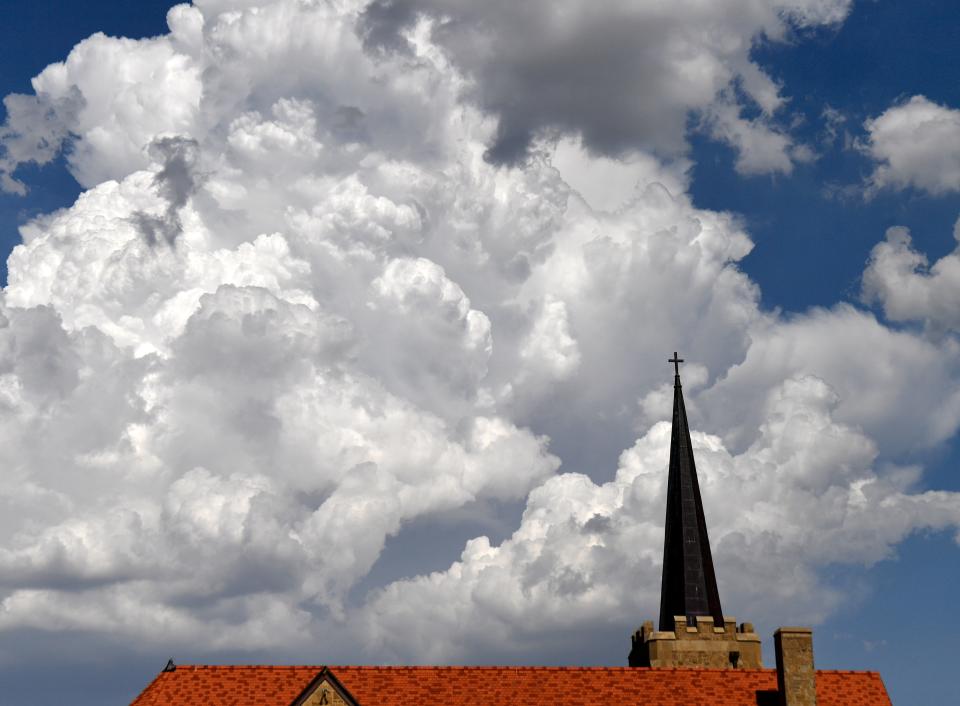Above Stamford, seeds of hope fly with the wind

STAMFORD – You don’t pour salt in a wound and you certainly don’t drop it out an airplane to make it rain.
Yet that last bit is a myth Gary Walker sometimes finds himself having to answer more than once, at times. His company, Seeding Operations and Atmospheric Research, or SOAR, is in the business of goosing a little extra rainfall out of local clouds.
Chloride is a component in one of the two chemicals Walker uses for coaxing recalcitrant rainfall from the heavens. But sometimes people remember just enough of their high school chemistry to fixate on the second half of that name.
Combine that with a dim recollection of world history and a Roman practice of salting enemy fields to turn them forever fallow, and the misinformation takes off faster than Walker’s airplane.
“Calcium Chloride, “Walker explained. “Not sodium chloride, that's table salt.”
Not all clouds are created equal
Silver iodide is the other chemical. Which one he would use depends on the altitude he’s working at and from where in the cloud he’s hoping to enhance the rainfall.
Walker gave a presentation at Stamford’s Museum of the West Texas Frontier, formally known as the Cowboy Country Museum, on August 10. To a group of nearly 20 he lectured on what it takes to, if not make it rain, then at least make it rain more.
Walker, a former District 80 state representative from 1995-2003, contracts with a group of seven and a half counties known as the Rolling Plains Water Improvement Association. Each of the counties pay their own share of the cost through their water conservation districts.
Locally, those are Scurry, Mitchell, Nolan, Fisher, Knox, Jones counties and half of Baylor County.
“You know, I'm always careful to say we don't make it rain, only God can provide those opportunities,” Walker said. “Second thing is, all clouds aren't suitable. You saw some beautiful clouds yesterday, they were really narrow and they had no water in them.”
Working with a meteorologist using radar data from the National Weather Service, Walker and his crew fly their airplanes only when they think there is a chance that rain might fall from a given cloud.
“Weather Modification is mostly what we understand as rainfall enhancement,” he said. “But it can also be hail suppression. And as it is in the western states, it can also be a lot of winter seeding for snowfall.”
Stick-to-it-iveness
The mechanics of how it works are familiar to anyone who has ever taken a walk on a foggy morning and gotten drenched doing so. Water isn’t just wet, it’s sticky too.
“When you get inside of a cloud, liquid starts colliding to form bigger drops that eventually turn heavy enough to fall out,” Walker explained. “that's the process that we're trying to initiate, to put something in the cloud that either through cohesion, or through this drop formation of freezing, that creates a raindrop large enough, heavy enough, to fall out.”
Attached to the trailing edges of his airplanes wings, and also on the belly of the fuselage, are racks of special flares containing either of the two chemicals. When Walker or another of his pilots gets the go-ahead from the meteorologist following them on radar, a flare is ignited to seed the cloud.

The particles are tiny enough to avoid the unpleasantness the Romans were aiming for, yet substantial enough for water to begin sticking. As more water continues to glom onto itself, gravity takes over and somewhere far below, a farmer smiles as the drop hits the ground.
“The kind of clouds we like to look at during the summertime are called convective clouds,” Walker said. “When you see those tops that look like cauliflowers, it’s because there's an inflow from the base going into that cloud and making it grow.”
By triggering the calcium chloride flare into the inflow, it travels up the cloud, gathering water as it goes. The silver iodide flares are typically triggered at a higher altitude, but with military aircraft operating frequently in the area, Walker said they often find themselves flying at lower levels to avoid those operations, thus sticking with the calcium chloride.
Hot stuff
Despite a few pop-up storms in mid-August, Walker said they’ve mostly suspended operations for the month because of the month’s unusually high heat.
“The last time I flew in San Angelo, I think the bases were 12,000 or 14,000 feet,” Walker said. “It's very difficult to get water to fall two miles, because it's so hot on the ground it pretty much evaporates before it gets there.”
But if there’s one true thing about the weather, it’s that it’s always changing, even if that change doesn’t seem to come soon enough. Walker said they’re going to keep their power dry until the end of the month and then start running missions again.
“This is people's tax money that's paying for this, and so I just don't feel right when I can see that there's not going to be anything,” he said. “We just try to make it efficient for your dollars for when we have a chance.”
He admits that seeding clouds is not a silver bullet, it won’t bring rain from a clear, blue sky.
“But you know, 15-percent, 10-percent more water out of a one-inch rain?” he asked. “If you do it three or four times, it makes a huge difference to a crop, just a few tenths at a time.”

This article originally appeared on Abilene Reporter-News: Above Stamford, seeds of hope fly with the wind

